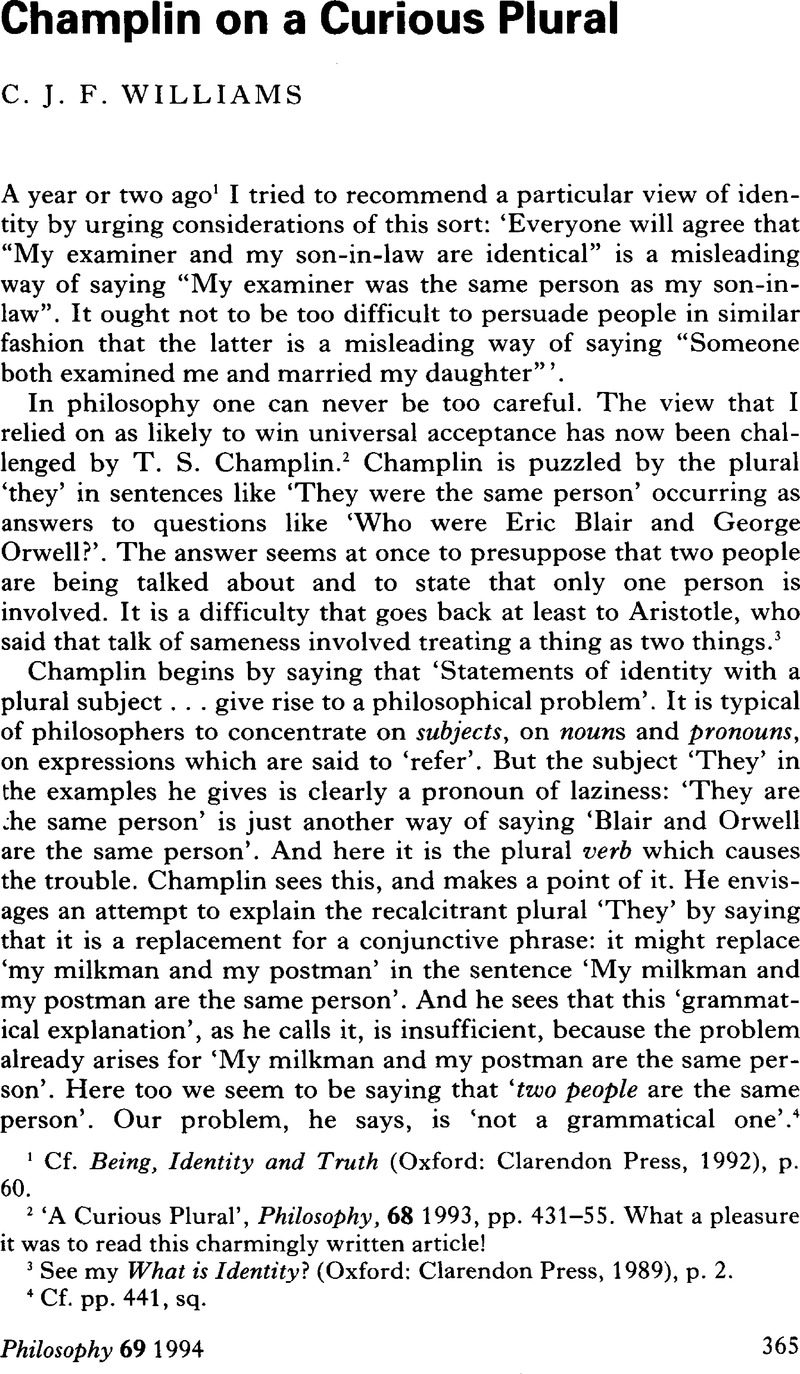No CrossRef data available.
Article contents
Champlin on a Curious Plural
Published online by Cambridge University Press: 30 January 2009
Abstract

- Type
- Discussion
- Information
- Copyright
- Copyright © The Royal Institute of Philosophy 1994
References
1 Cf., Being, Identity and Truth (Oxford: Clarendon Press, 1992), p. 60Google Scholar
2 ‘A Curious Plural’, Philosophy, 68 1993, pp. 431–55. What a pleasure it was to read this charmingly written article!Google Scholar
3 See my What is Identity} (Oxford: Clarendon Press, 1989), p. 2.Google Scholar
4 Cf. pp. 441, sq.Google Scholar
5 P. 440.Google Scholar
6 Cf his remarks on p. 444 about ‘The same person was called both John Wayne and Marion Morrison’.Google Scholar
7 Both ‘identical’ and ‘the same’ are capable of expressing either numerical or specific identity: if Blair and Orwell had not been the same person, ‘Blair′s tie and Orwell′s tie were identical′ could have been a statement of specific, not numerical, identity. The difference between these two sorts of identity statement is not captured by talking about numerical identity as ‘identity in the strict sense’. The difference between them is much greater and more interesting than a difference between ‘strict’ and ‘loose’. Statements of numerical identity (‘My milkman and my postman are the same person’which is, roughly, of the form ‘3x (Fx & Gx)’) involve second- level concepts symbolisable by ‘3x (()x & ()x)‘, where statements of specific identity (‘Blair and Orwell were identical twins’ or ‘Eden′s tie was identical with Macmillan′s—which is, roughly, of the form ‘3F (Fa & Fb)’) involve first-level concepts symbolisable by ‘ 3F (F() & F())’. Champlin is right to regard the topic of monozygotic twins as irrelevant to his puzzle.
8 Champlin seems, rightly in my view, to applaud Wittgenstein′s awareness that converting ‘A and B are the same’ into ‘A is the same as B’ is merely the overture to the drama entitled ‘The Paradox of Identity’, not its finale (see Champlin, p. 443).




